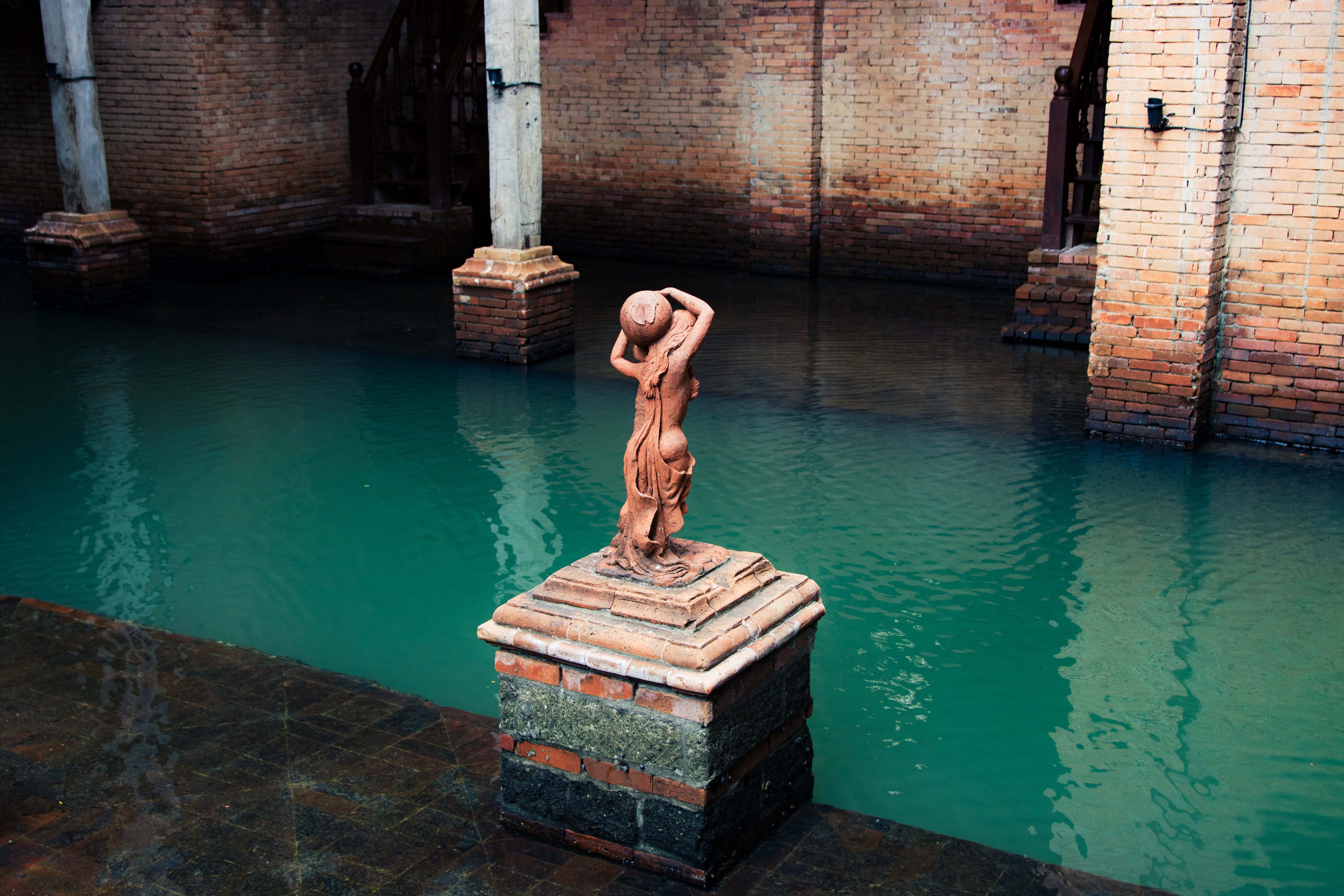As the country forges its ascent into a modernized haven, the city of Bataan, rich with its significance in Philippine history, backtracks to the authentic heritage of the country’s most notable features of the past. Las Casas Filipinas de Acuzar, nicknamed Las Casas, a 400-hectare open-air museum and heritage village located in Bagac, Bataan, provides locals and tourists alike the complete experience of life during the country’s Spanish colonial period.
Venturing into Las Casas emits the impression of travelling back in time, evident in its features that are meant to resemble the Spanish rule in the Philippines. Replicating the notable accesoria of the Spanish era, the houses are decorated with European columns and stained-glass windows matched with antique furniture and massive chandeliers, providing anyone who enters these houses that ever-grandiose and Illustrado sense of royalty.
Spearheaded by Mr. Jose “Jerry” Acuzar, Las Casas’ 62-year-old owner and current chairman of real estate development company New San Jose Builders, Inc., the construction of Las Casas began as a way to preserve the country’s past and embed it permanently up to the future.
Currently on its eighth year of operation since it was opened to the public in 2010, the heritage and convention center is most popular for its collection of restored Spanish-Filipino houses that were originally built between the years of late 1700s to early 1900s. According to one of the site’s tour guides, Roy Gray Madrid, Las Casas houses a total of 57 mansions, with 36 of those still using 40 to 60 percent of its original material and structure. Casa Baliuag and Casa Hagonoy from Bulacan, and Casa Jaen from Nueva Ecija are a few of the mansions taken from their former locations and rebuilt in Bataan. The rebuilding stage is a rigorous process of marking and labelling scaffolds, bricks, furniture, and other items to accurately follow the original model of the houses.
With the slogan, “Pride in the past, hope for the future,” the famous tourist site draws all attention to the beauty and craft of the Spanish-Filipino architecture and lifestyle, while catering to the interests of the current generation.
Immersed in the Filipino culture
Living up to the site’s physicalities, the all-out, authentic Filipino culture thrives in Las Casas. The tour guides, dressed in barongs and sayangs, are adept with a passion for the country’s heritage. Through their knowledge, various questions, from how the preservation of the mansions are maintained to the specific names and artists of the statues that decorate the site, can be answered.
A day tour allows one to experience notable Filipino festivities, with the tour guides and staff encouraging visitors to join a game of hampas palayok, in which the player tries to spike a clay pot filled with treats while blindfolded, as well as place a bet during a round of sabungan (cockfighting). Visitors can also watch a short musical play on the life and works of Dr. Jose Rizal, as the site also houses a replica of the national hero’s childhood home, Casa Biñan. Additional features include mansions with exhibits on World War II and monumental churches in the Philippines.
Meanwhile, Cusina ni Nanay Maria, a delightful restaurant that offers meals based on the original recipes of Acuzar’s mother, offers authentic Filipino cuisine as well. Included in the menu are the classic Filipino meals such as Sinigang na Bangus sa Bayabas and Adobong Pusit, and Gabi ice cream for dessert. Non-profit art collective, Bellas Artes Projects’ contemporary and experimental art installations can also be found inside the Villanueva Mansion built in 1867, which was then converted into the Philippines’ first art school and is currently preserved in Las Casas.
For relaxation and leisure, visitors can spend a day by the site’s beach and catch a stunning view of the sunset. With no venue losing its touch of Filipino culture, recreational activities, such as carabao racing and bamboo climbing, occasionally occur by the beach for people to watch and participate in.
Brick by brick
Every detail in Las Casas is crafted with precision and behind this are the undoubtedly hardworking and talented artists, builders, and workers that turn sketches and blueprints into reality. Though all of it could be easily accomplished through modern machinery, the Acuzars choose to maintain the traditional method of work. From the foundational structure to the artistic decorations, the production of Las Casas is accomplished through manpower. Not only does it uphold the site’s culture, but it has also provided hundreds of job opportunities to the locals of Bataan.
By gathering people who center all their skill and talent to one goal, Las Casas has become a tight-knit community. In addition, the employees are encouraged to stay in houses provided by the Acuzars themselves that are just a walk away from the site. Not only has this ignited a sense of camaraderie and kabayanihan among them, it also sheds light on the positive Filipino values that Acuzar himself promotes.
“Kung andito si Mr. Jerry, aakalain mo isang turista lang din siya. Naka-shorts at polo lang, napakasimple. Tapos pumupunta siya dito sa warehouses palagi para kamustahin ‘yung mga manggagawa,” Madrid said, reflecting how Mr. Acuzar’s humility shines through every time he visits the site.
As a symbol of the Philippines’ pride in its past, Las Casas Filipina de Acuzar continues to imprint a crucial message of the significance of heritage and remembrance for future generations. With the country’s rapid modernization catching up, Las Casas holds firm ground on the roots the Philippines’ rich history and reinvigorates the Filipino culture.
This article was originally published in The Benildean Vol. 4 No. 2: Preservation.


